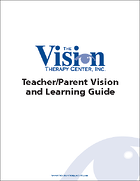
It’s sad but true: Most kids (maybe even your own) would rather play a video game than go outside and play. What’s also sad but true is this immersion into the virtual world can lead to some real-life vision problems.
With computers, hand-held video games and smart phones at their fingertips, children have easy access to the digital world. And if they’re anything like their adult counterparts, they probably spend a lot of hours on these devices. (Let’s get real: Who can resist the allure of a smart phone?)
It’s simply a fact of life – a by-product of our culture. Our kids are caught up in a trend that’s here to stay.
Because these digital devices aren’t going away anytime soon, we need to better understand how they can impact your child’s vision, and what you can do to make sure your son or daughter’s visual system stays healthy in the digital age.
Our visual system wasn’t designed for computers
The visual demands on people have significantly changed in the last 50 years. This is a contradiction to how our visual system was designed.
Our visual system – which includes your eyes, brain and visual pathways – was designed to look at far points most of the day. This was fine for days before we became shackled to our cubicles and our computers.
This shift in visual demands can result in near point stress, which is stress on the visual system due to near work. It can also lead to a condition known as Computer Vision Syndrome, which frequently occurs among video display terminal workers.
If the adult world is suffering from computer-related vision problems, why aren’t we seeing more problems with kids?
You will, just not yet. The answer lies in the same reason that kids don’t wear their coats outside during winter: They don’t know any better.
Why kids don’t complain about vision problems now
As the American Optometric Association notes, kids will experience the same types of computer-related vision problems as adults: Eye discomfort, fatigue, blurred vision, and headaches.
However, they may be more susceptible to problems because of the following reasons:
- Children become fixated. It’s incredibly easy for kids to become addicted to a video game, and play for significant time without a break. This causes eye focusing problems and irritation. Kids will ignore these symptoms – especially when they’re 200 points away from the top score.
- Children will tolerate harmful conditions. Kids are remarkably adaptable. Things that bother adults, like a bright video screen or loud noises, won’t bother a child. As a result, they won’t think to change the environment to reduce the eyestrain.
- Children don’t fit the adult world. Computer screens and workstations are designed for fully-grown adults. Smaller children sit about 15 degrees below the most efficient viewing angle, and probably have difficulty reaching the keyboard. But a kid will tolerate the discomfort to stay at the computer.
What can you do to reduce vision problems?
There are a number of factors that will help reduce the eyestrain. Some of these are easy, ongoing behavior modifications that should be incorporated into daily life. Others may result when damage has begun to occur.
- Get them moving. This one probably goes without saying, but it yields the most significant rewards. The more kids are running, throwing and catching, the less they’re camped in front of a computer. Not only are they spending less time on the computer but, more importantly, they are exploring movement through visual space which is critical for the development of good visual skills.
- Start with a vision test. You need to begin with a proper assessment of your child’s current eye condition. Visit an optometrist to ensure your child can see clearly, and that there are no conditions that may result from eye strain.
- Ensure the computer is at the correct height and position. You want your child’s eyes aligned properly with the screen, and their feet should rest on a footstool. An adjustable chair will help you make the necessary accommodations for proper computer viewing.
- Take a break. Every fifteen minutes, the child should stop their computer activity and focus on far-away objects.
- Find the right light. Be sure a comfortable level of lighting is set in the room. Remember, if it’s not comfortable for you, it’s probably not comfortable for them (despite their protests otherwise.)
- Watch out for glares and reflection on the computer screen. A glare or reflection can shock the eyes. Make the right adjustments to keep the visual stimuli on an even keel.
- Get a near-point lens. A prescription near-point lens can help to prevent vision problems that result from eye strain and can alleviate the symptoms associated with mild binocular vision problems.
- Use vision therapy to correct any problems. When a near-point lens is not enough to alleviate the symptoms of a vision problem, vision therapy can help. The brain has remarkable plasticity. In the event your child does suffer from Near Point Stress and/or experience the symptoms of Computer Vision Syndrome, vision therapy can offer up some non-invasive techniques to solve the problem.
Computers aren’t going away. But if we adjust our viewing habits, we are taking the steps to ensure vision problems don’t become a fixture as well.
 Learn how undetected vision problems can impact a child's ability to learn. Download your free Vision and Learning Guide.
Learn how undetected vision problems can impact a child's ability to learn. Download your free Vision and Learning Guide.

